What is acrylic wallpaper?
The material is a two-layer coating, paper or vinyl and acrylic. Foamed acrylic is applied to the paper base using the dot method, according to the same principle as on vinyl wallpaper. As a result, an airy, breathable embossed pattern is formed on the surface. The polymer coating is safe for interior decoration, acrylic does not emit harmful substances.
The main differences from vinyl
Acrylic wallpapers are similar in characteristics and production method to vinyl ones. However, they still have some differences.
- Acrylic and vinyl coatings have a different thickness of the top layer, for vinyl it is 4 mm, for acrylic only two. This fact affects the wear resistance of the coating.
- Acrylic coating has a lower cost,
- Acrylic wallpaper is less moisture resistant.
Pros and cons
Like any finishing material, acrylic coating has its own advantages and disadvantages. By comparing all the characteristics of the material and the room, you can make a decision regarding this type of finish.
| pros | Minuses |
|---|---|
| Low material cost | Low moisture resistance |
| Safe for health | Low wear resistance |
| The surface is breathable | |
| Easy to clean | |
| Mold resistant |
Types and characteristics
Paper-based
Eco-friendly material. Canvases with a paper base can be used to decorate a children's room and bedroom. At the same time, this type with the lowest strength, the service life of the coating is low. When pasting, the adhesive is applied to the surface of the walls and to a piece of wallpaper, after which they are immediately connected. Paper does not react well with liquids, so finishing work must be done consistently and quickly.
Non-woven base
Non-woven acrylic wallpapers are stronger than paper ones. The elastic first layer is durable and able to withstand even a crack in the wall. Wallpaper on a non-woven base is easier to glue, they do not need to be accurately measured, as with a paper type, the remainder is cut off after pasting.
Liquid wallpaper
Liquid acrylic wallpaper is a dry mixture in its original form, which is diluted with glue before work. The surface after application has no seams and looks like plaster. In order to ensure maximum adhesion of the surfaces, the walls must be primed before applying the material. This procedure also helps to avoid mold and mildew.
On the picture attic converted into a children's room. The walls are decorated with liquid wallpaper with acrylic spraying in light colors.
Acrylic wallpaper gluing
What kind of glue to use?
There is no fundamental difference between gluing acrylic, paper or vinyl wallpaper.They all "sit" on glue on a previously prepared surface. The glue is suitable for the one that is intended for vinyl wallpaper, but it would be better to choose the one that the manufacturer recommends, since it will take into account all the nuances of the material.
Step-by-step instruction
The work of gluing acrylic wallpaper is carried out in several stages. It has no fundamental difference with other wallpapers or individual complexities. For the best result, it is necessary to close all windows, doors and get rid of drafts in the apartment until the walls are completely dry.
-
Cleaning the walls. The old coating must be removed.
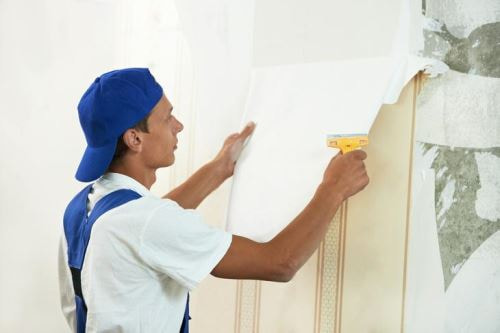
-
Primer. The walls are primed for better adhesion of the material to the walls. If necessary, cracks and irregularities are sealed with a putty, after which the surface is primed again.
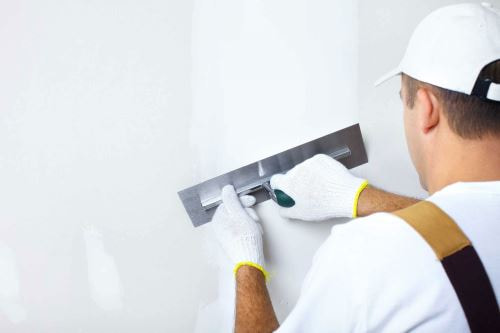
-
Preparing the adhesive. The packages describe the process of diluting the glue quite clearly. Depending on the manufacturer, it may differ slightly, therefore, before proceeding with its preparation, you must read the instructions in detail.
-
Measurements and preparation of strips. For this, the length of the walls is measured and strips of the required length are cut from a roll of wallpaper, adding a few centimeters to the stock. This preparation simplifies and streamlines the gluing process.
-
Marks on the wall. Before starting work, you need to measure out an even vertical strip equal to the width of the wallpaper. The vertical mark is measured using a level or plumb line, it allows you to glue the wallpaper exactly vertically, without "filling up" the strip.
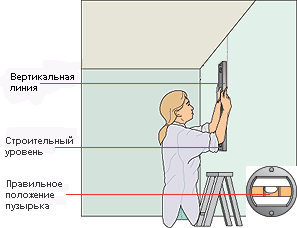
- Glue is applied to the wallpaper strip and the wall with a brush or roller and left to soak for a while, after which the canvas is applied and fixed to the wall. Paper-based acrylic wallpaper does not take time after applying the adhesive, but is immediately glued to the wall.
-
Smoothing. After gluing, the wall is smoothed with a soft cloth or brush. A plastic spatula is not suitable for this type of wallpaper, it can damage the surface structure.
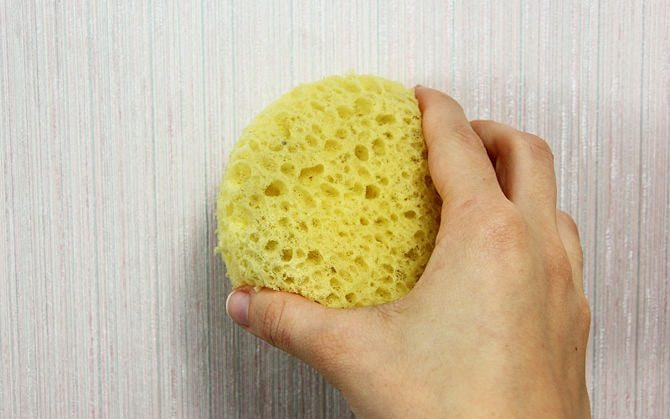
-
Once dry, you can remove excess wallpaper.
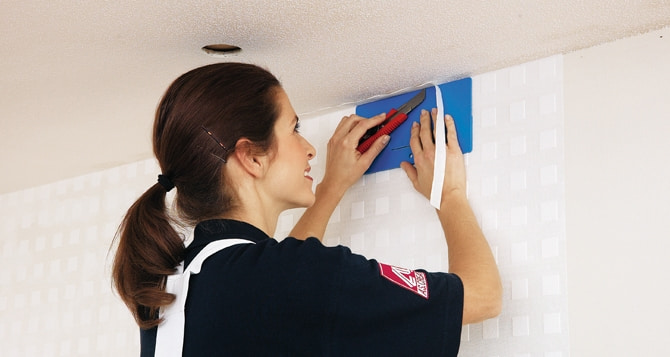
Video
Care and cleaning
Any surface in the house requires periodic maintenance, as dust settles on them, albeit without obvious visual signs. Walls are no exception. Acrylic coating has some care features, however, like any other. Observing the simplest care rules, the service of acrylic canvases can be extended, and the appearance can be preserved in its original form.
- Acrylic spraying is "intolerable" to abrasive cleaners and rough brushes,
- cleaning is carried out with gentle gentle movements,
- for preventive purposes, it is enough to walk with a soft brush or dry cloth,
- it is not washable wallpaper, but you can use a damp soft cloth for wet cleaning,
- water will help get rid of the stain, or rather a sponge soaked in it,
- for "difficult" stains, you can use special liquids for acrylic surfaces.
Photos in the interior
Acrylic wallpaper will harmoniously look in the interior of any room, texture and unusual relief will become a successful design for classic and modern design.
On the picture bedroom with acrylic wallpaper, painted in powder color.
The ability to paint the surface allows you to choose the perfect tone. Acrylic wallpaper will look great in the interior of any room.
The environmental friendliness of the material allows it to be used in any room, and therefore in a children's room.
On the picture bedroom in a modern style. The geometry of the wall decoration makes the room look wider.

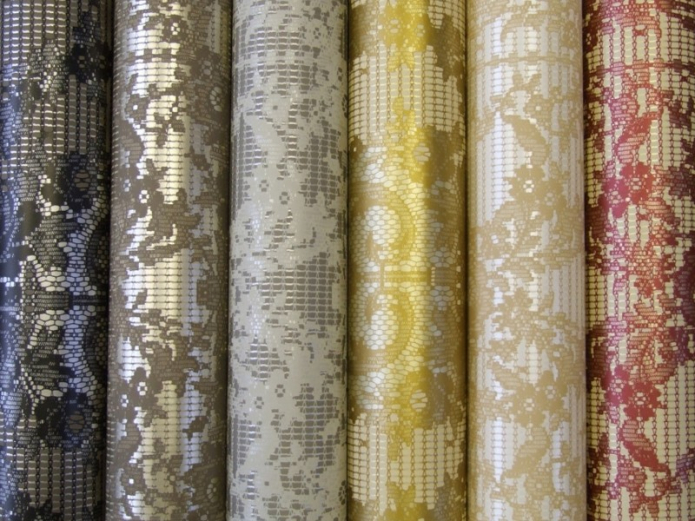
 10 practical tips for arranging a small kitchen in the country
10 practical tips for arranging a small kitchen in the country
 12 simple ideas for a small garden that will make it visually spacious
12 simple ideas for a small garden that will make it visually spacious
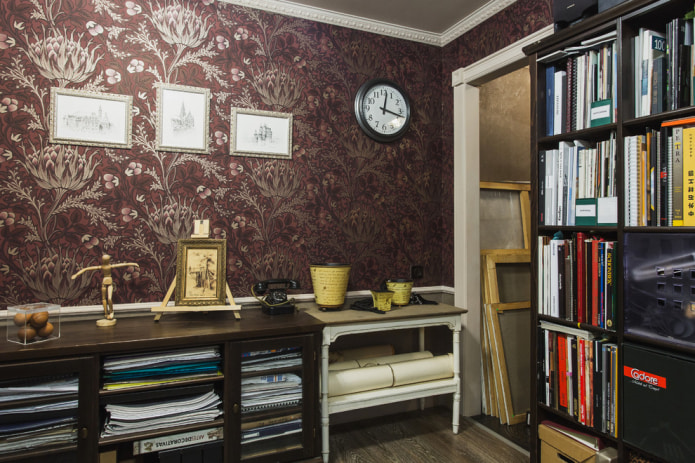
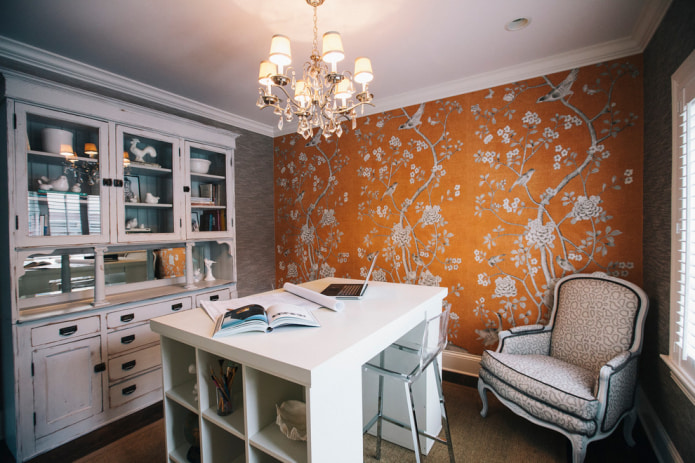
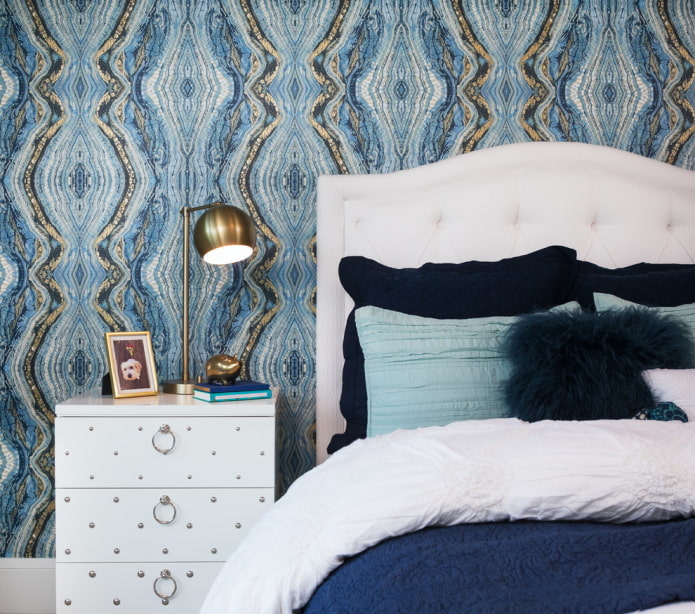
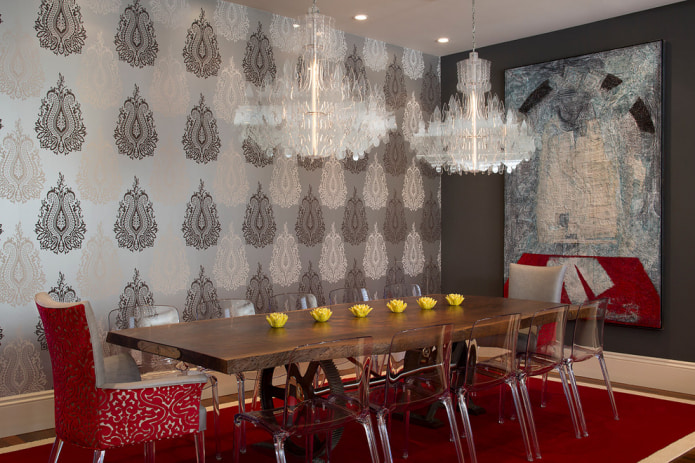
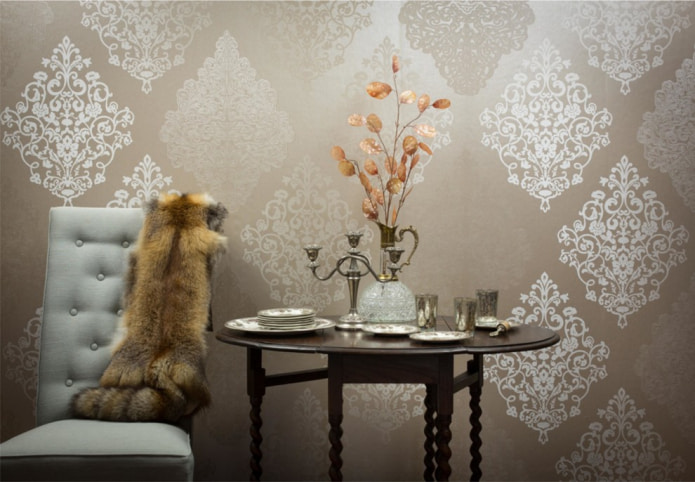

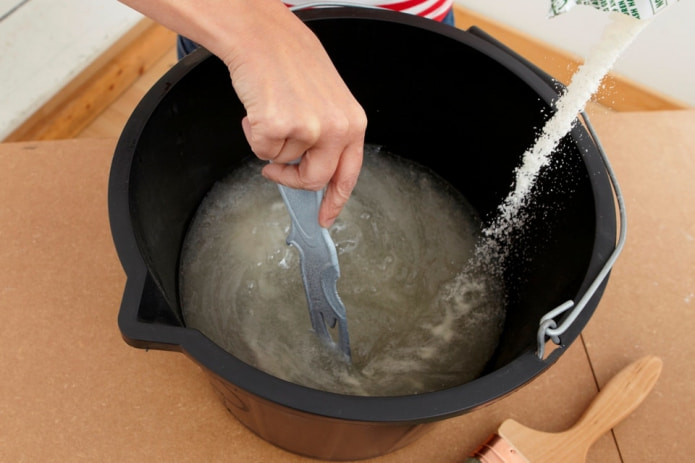
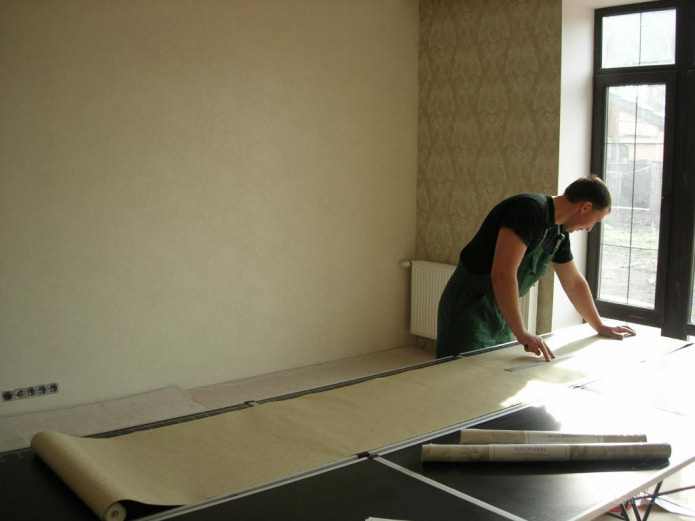

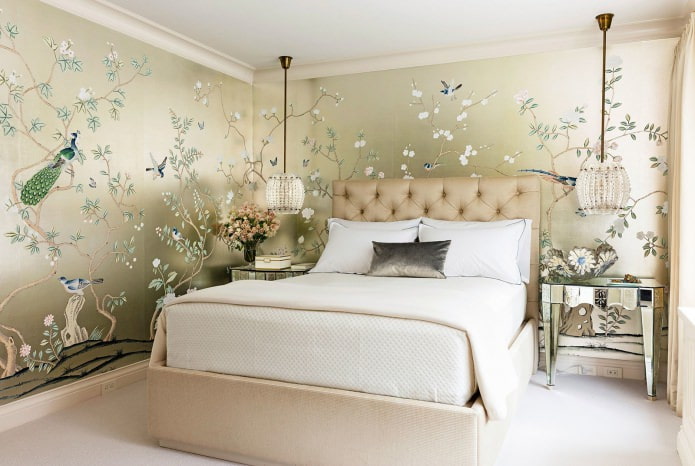
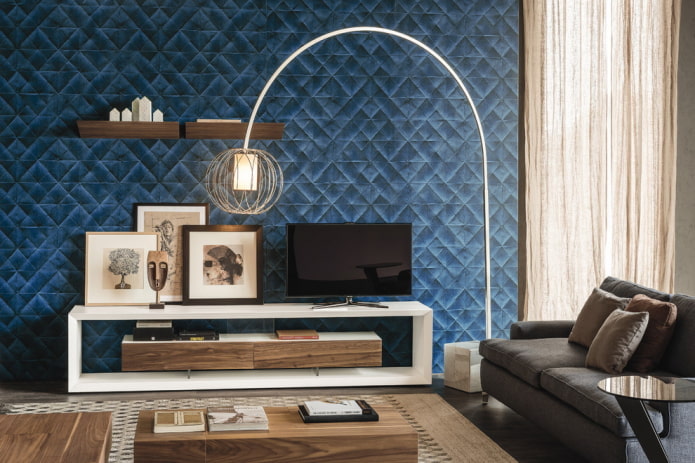

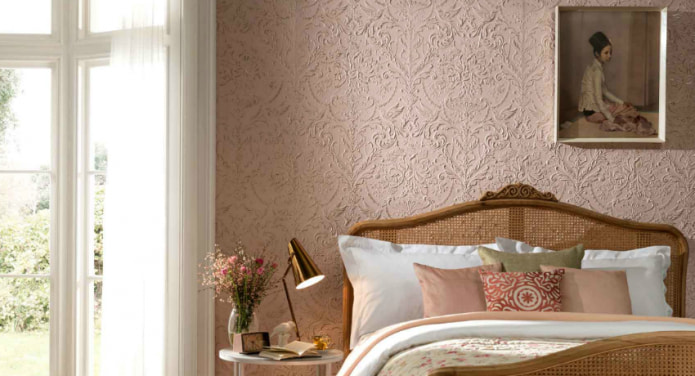
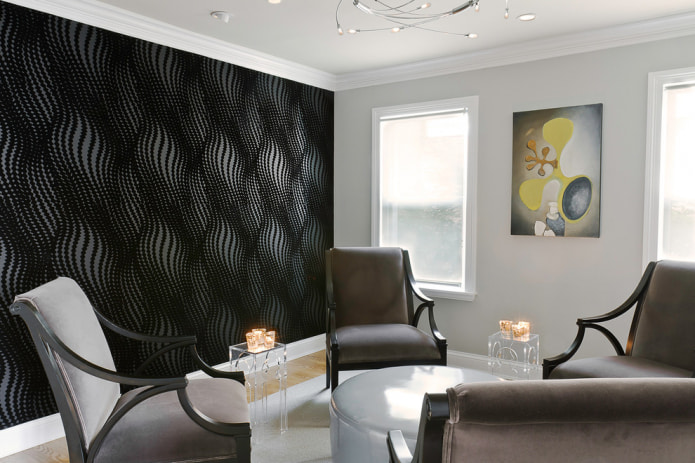
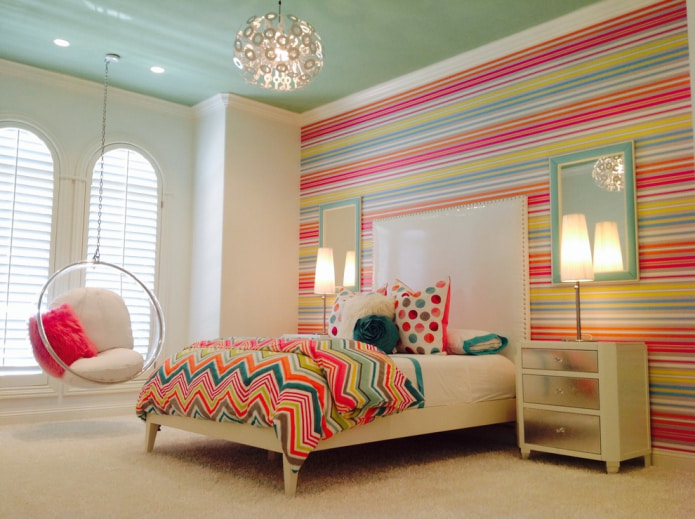
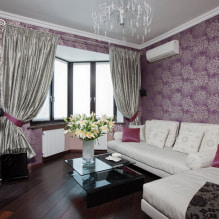
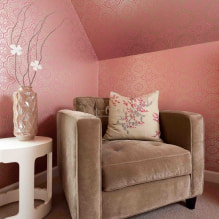
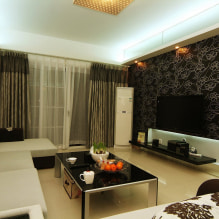
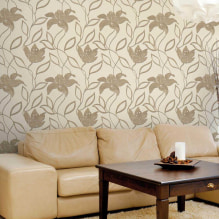
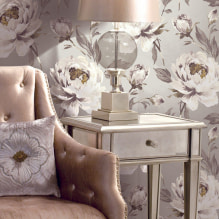
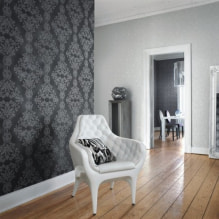
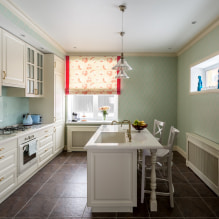

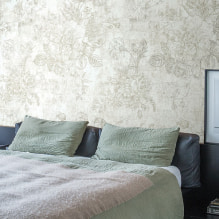

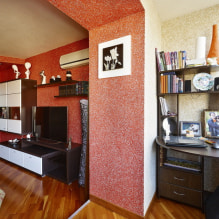
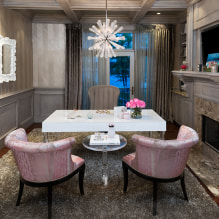
 13 bad habits a good housewife shouldn't have
13 bad habits a good housewife shouldn't have 24/7 home cleanliness - 4 secrets for the perfect housewife
24/7 home cleanliness - 4 secrets for the perfect housewife 6 hotels in Sochi that will give odds to the promoted foreign hotels
6 hotels in Sochi that will give odds to the promoted foreign hotels Top 10 interior design trends 2020
Top 10 interior design trends 2020 Rating of cheap TVs with Smart-TV
Rating of cheap TVs with Smart-TV New Year's LED garlands on AliExpress - we disassemble while it's hot, so that it's bright at home
New Year's LED garlands on AliExpress - we disassemble while it's hot, so that it's bright at home